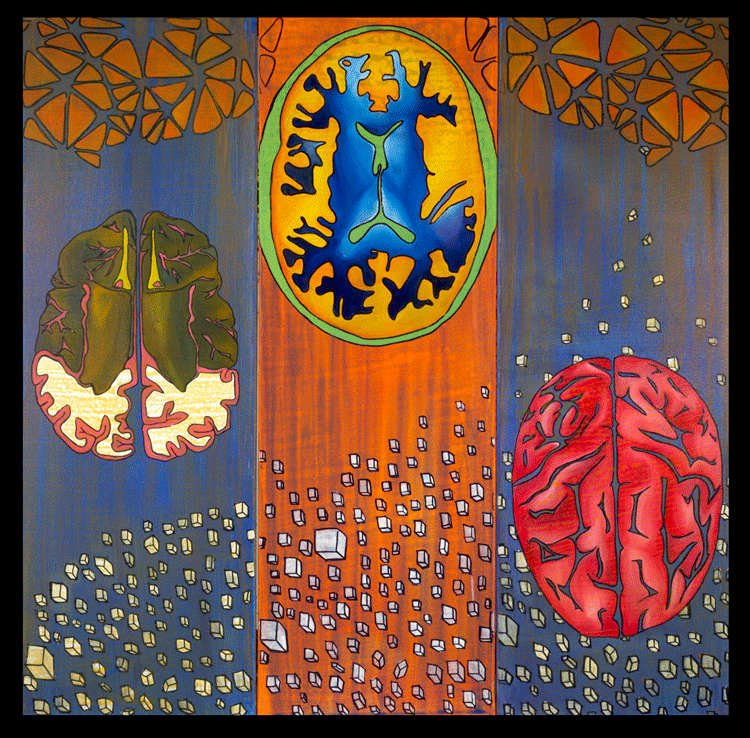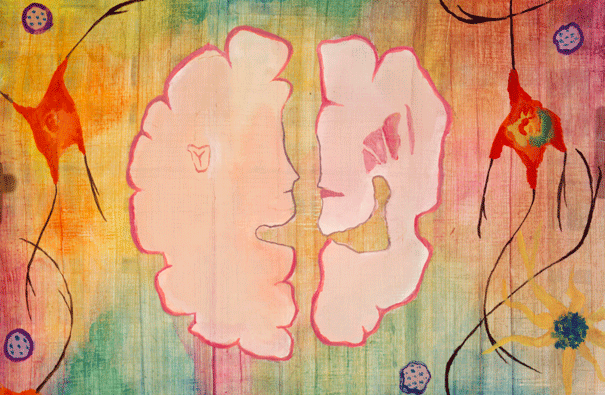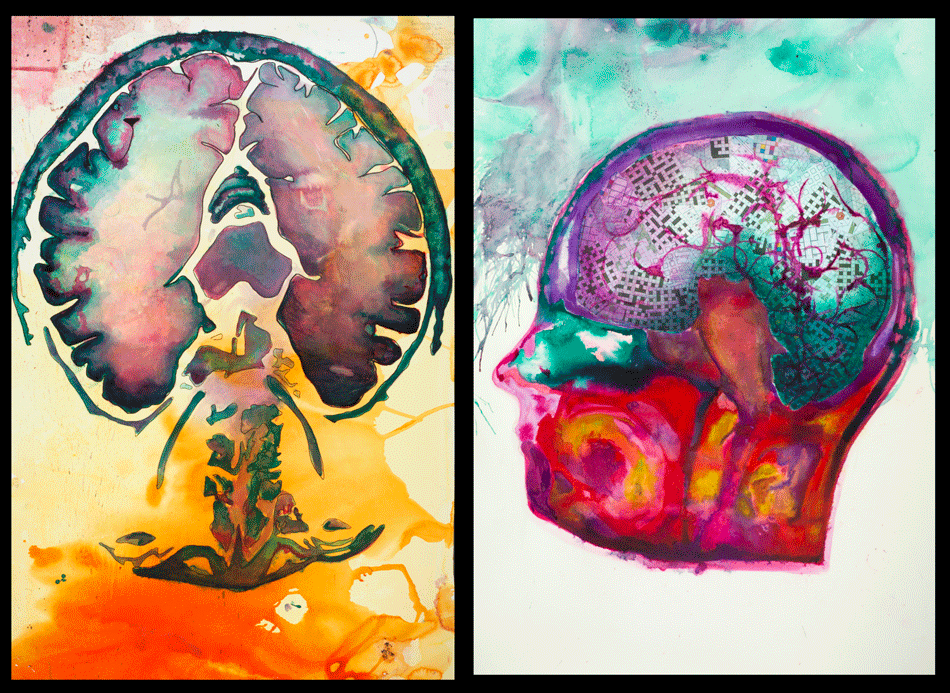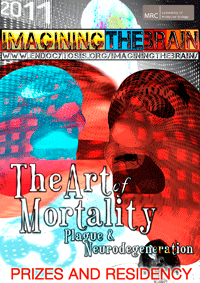
Communicating the frontiers of neuroscience through art
Click on an icon to see the entry |
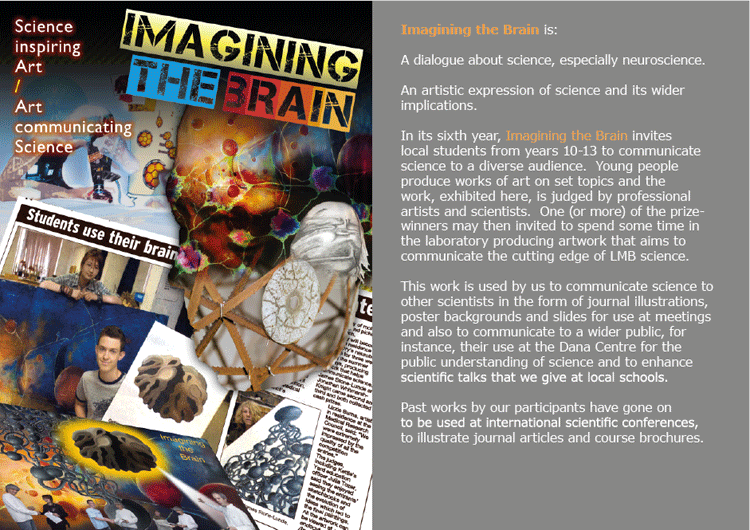 |
||||
Order and Pattern
|
||||
Comments from judges:
Collection of supporting work: |
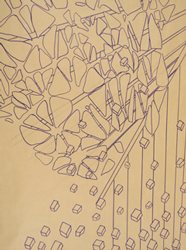 |
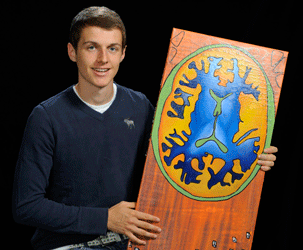 Picture of Edward Parkhouse
Picture of Edward Parkhouse |
Seeing The Difference
Joint 1st prize
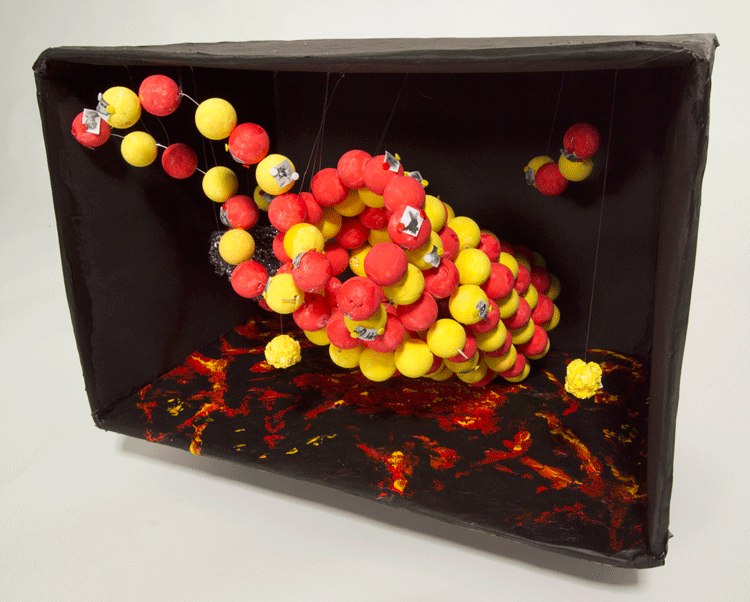
by
Patrick Lyons (age 15)
Parkside Federation
Sculpture in the category: Neurodegeneration
The main sculpture is a disintegrating microtubule from a neuron with Alzheimer’s. The wire clumps are tangled mesh of aggregated tau protein. In a healthy neuron soluble tau protein stabilizes the microtubule and prevents disintegration. The fire-like impasto painting underneath is based on an image of an Alzheimer’s plaque formed from amyloid-beta protein, which have fallen out of the solution in the brain. And finally the photos symbolise memories that stay or are lost in alzheimers. New memories are lost first so the photos on the disintegrating balls are recent memories whilst childhood memories are still on the complete microtubule.
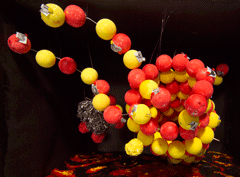 Other images: 1 (1.1MB), 2 (1.2MB), 3 (1.2MB), 4 (1MB) |
Comments from judges: Picture of Patrick Lyons |
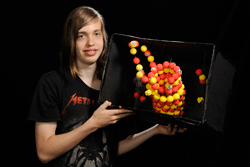 |
Alzheimer’s
2nd prize
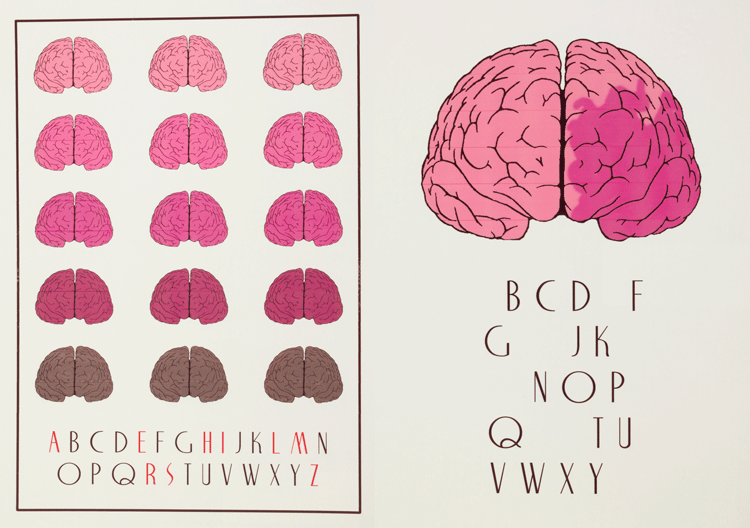

by
Tristan Currie (age 19)
Netherhall School and Sixth Form Centre
Digital art entry in the category: Neurodegeneration
Notes from artist:
Brain going through stages of disease. In the left image the letters spelling Alzheimer's are highlighted while in the right image they are deleted as part of the disease process.
Comments from judges: Large image (3MB) Page from artbook (1.3MB) Page from artbook (1.5MB) Page from artbook (1.9MB) Page from artbook (1.5MB) |
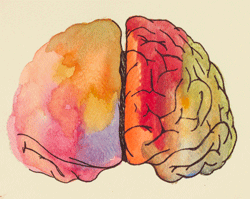 |
Neurodegeneration
3rd prize
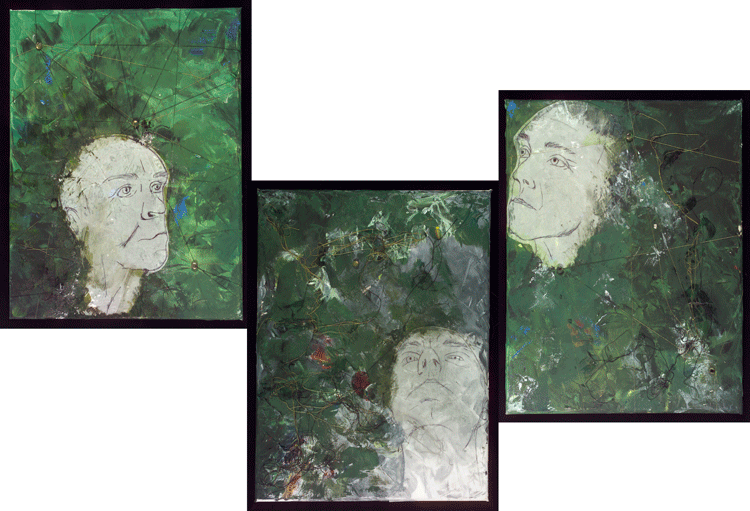
by
Madeleine Lawson (age 17)
Netherhall School and Sixth Form Centre
Triptych with textile detail, in the category: Neurodegeneration
Notes from artist:
Triptych showing the deterioration of the brain over time. They represent the gradual loss of structure and how badly affected proteins cause others to become abnormal.
Comments from judges: Large image1 (2.4MB), image2 (2.3MB), image 3 (2.3MB) |
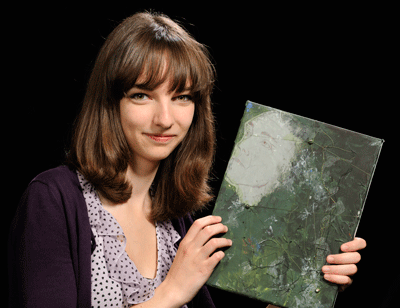 |
Mind The Gap
Highly commended
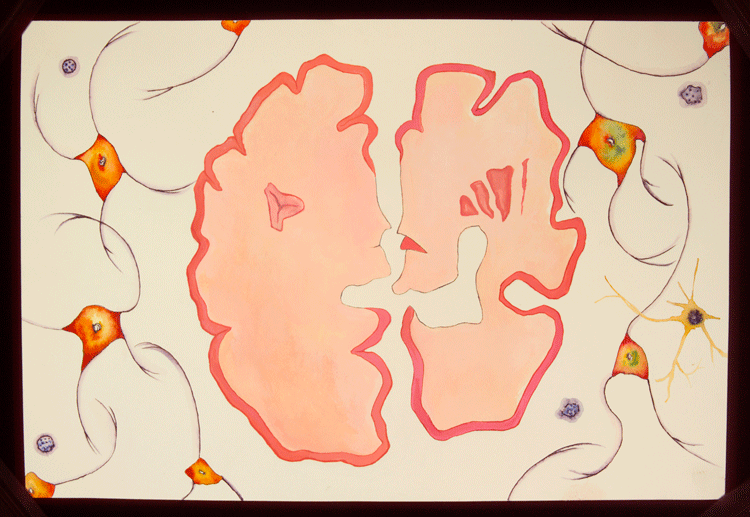
by
Kirtee Kebla (age 17)
Netherhall School and Sixth Form Centre
Watercolour entered in the category: Neurodegeneration
Large version of above image (0.9MB),
Additional image (1.2MB)
Notes on the work: The inspiration for the piece was based on Alzheimer’s disease. At first glance, it depicts a brain scan, where the left brain represents one whose healthy while the right brain is of an Alzheimer’s sufferer. Upon a second look, the brain scans were adapted to also look like profiles of people which go on to symbolize further. Neurons were also added to frame the piece while also creating a visual image of the element found inside the body.
Picture of Kirtee Kebla
| Comments from judges: |
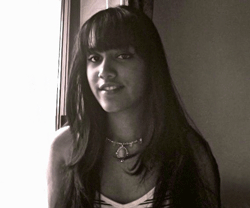 Page from artbook 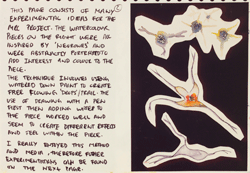 Larger Image (1MB) Cover Page (1MB) Another sketch (0.8MB) |
Death at your shoulder
Highly Commended
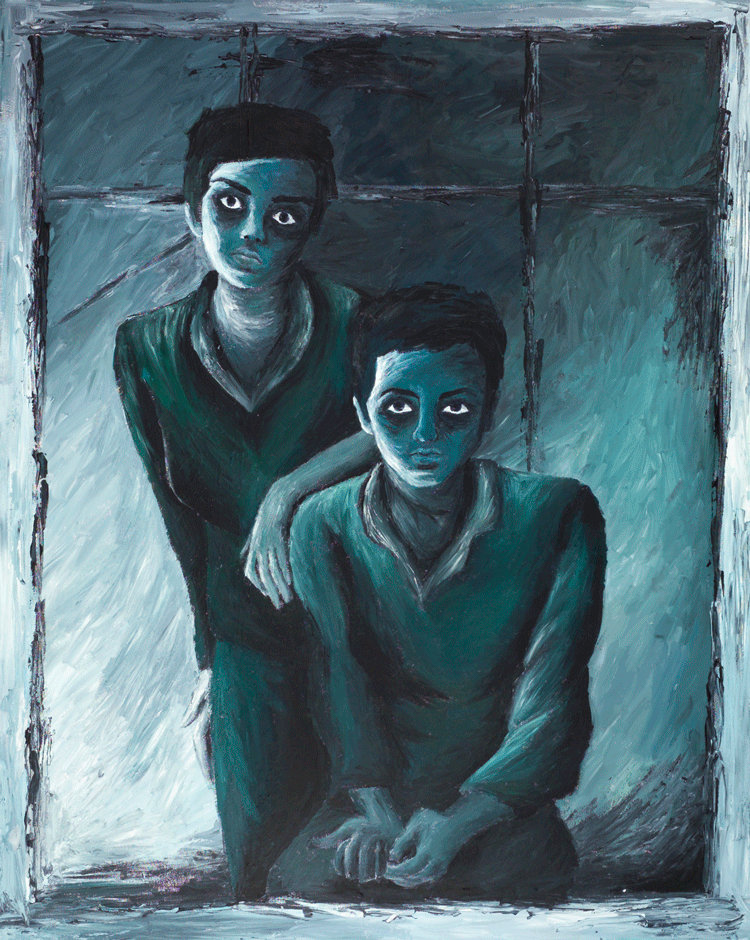
by
Frances Thompson (age 16)
Impington Village College
Painting in the category: Mass murderer, The Black Death (Plague)
Artist's comments: This is a double self portrait I created to show the intimate proximity with death experienced by medieval peasants and nobility alike during the black death. I tried to capture the atmosphere of superstition and paranoia in the twisted positions and intense, furtive expressions of the figures. The two identical people represent the conscious, living being (sitting), and the presence of their imminent death within them, depicted standing just at their shoulder, waiting patiently for the inevitable as if preparing to prey on their living counterpart at their weakest hour.
Larger Image (2MB)
Comments from judges:
“Artistically striking image concerning the Black Death. Masterfully portrayed through choice of colour and texture”
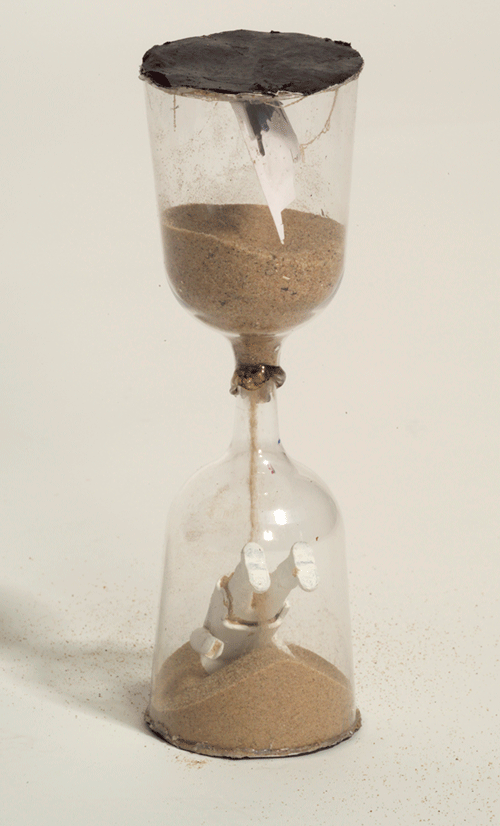
Notes on sculpture: The sand covering up society portrays how although as a community we recognise neurodegeneration diseases not enough is done to support the sufferers, often leaving them alone and stripped of their individuality, this is why there is a plain white model at one end and with only the brain showing. When turned over the sand runs from the graveyard / society to show that he is dead. I wanted this piece to show how as a society we do not do enough to support the society not enough is done to support sufferers and often time wins.
Sands of Time
Highly Commended
by
Chloe Austin (age 15)
Parkside Federation
Sculpture entry in the category:
Neurodegeneration - the silent killer
Larger image (0.5MB)
Alternative view (1.2MB)
Comments from judges:
“Very original and startling, yet accurate depiction of neurodegeneration. An interactive, playful sculpture demonstrates an imaginative use of found objects. The piece shows a high level of technical skill to make an operational “Sand of Time”.”
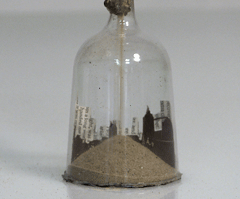
Fire in the Mind
Highly Commended
by
Adam Duncan (age 15)
Parkside Federation
Video entry in the category:
Neurodegeneration - the silent killer
Notes on audiovisual: The artwork consists of an interview I had with my great uncle who suffers from Parkinson’s and a PET scan of his brain that he had from when he was diagnosed with it both printed onto a piece of paper. I used fire to convey the way that Parkinson’s starts from something small and grows and grows and become life threatening and the interview to lend a touch of humanity to the piece because if people think of neurodegeneration as a whole they don’t see what it is like for the individuals that it effects.
Comments from judges:
“This personal interview with a real Parkinson’s Disease sufferer was thought provoking and effective. Very powerful visual imagery of burning through a paper diagnosis.”
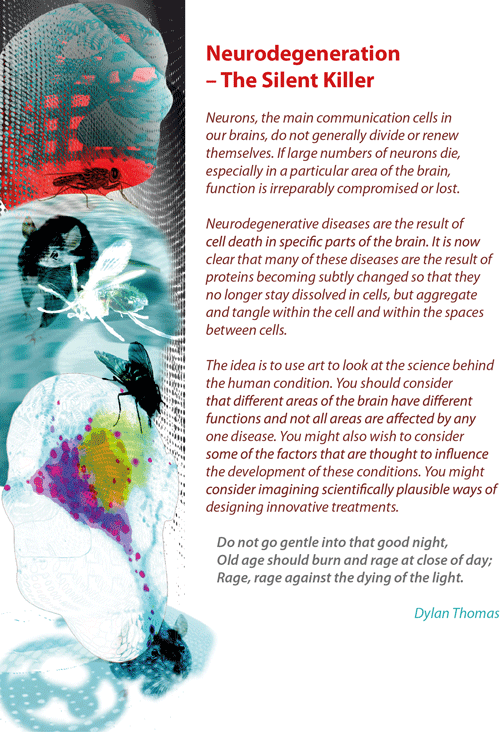
Exhibits below have been entered under the category:
Neurodegeneration - the silent killer
background 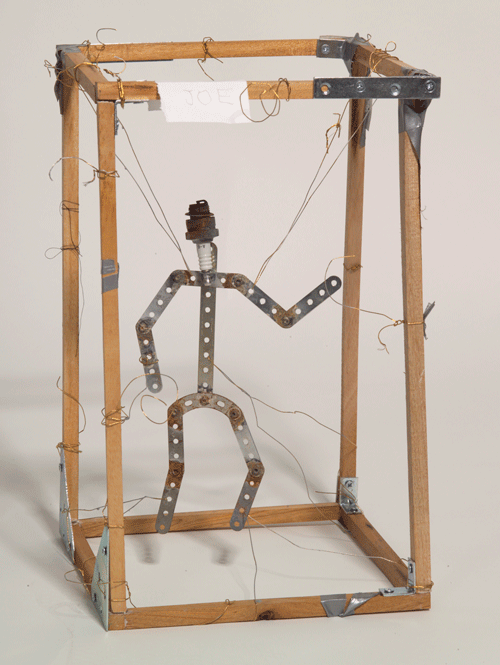
Joe
by
George Bainton (age 15)
Parkside Federation
Sculpture in the category:
Neurodegeneration - the silent killer
Larger image (0.78MB),
1(0.7MB), 2(0.7MB)
Notes on sculpture: This piece shows the effects of Parkinson’s disease on movement.
Comments from judges:
“Depicts the idea of limited movement well. Could be further developed. The idea of using a defunct spark plug for the basic neural dysfunction brain is inspired."
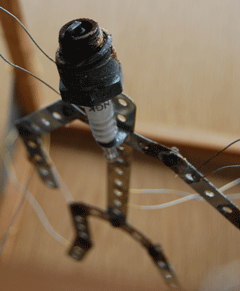
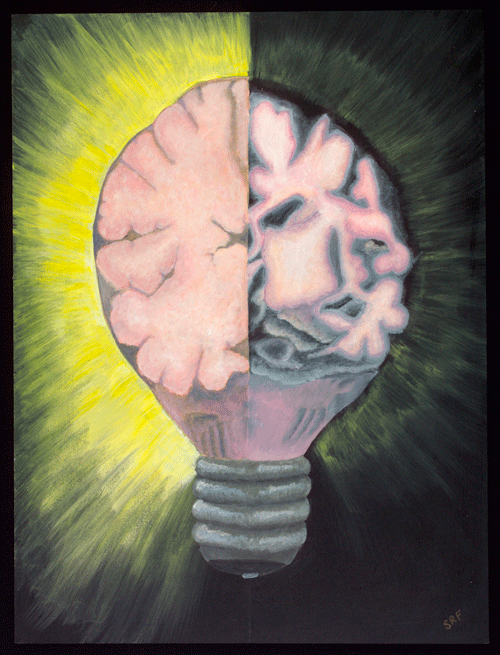
Alzheimer’s - the end of bright ideas
by
Stephanie Fellows (age 17)
Hills Road Sixth Form College
Painting in the category:
Neurodegeneration - the silent killer
Larger image (1.3MB)
Comments from artist:
“I wanted to get across the idea that Alzheimer’s destroys a person’s ability to think clearly. The brain has been turned into a light bulb with the left-hand side containing a healthy brain and so shining brightly and the right-hand side containing a brain with advanced Alzheimer’s and so being very dim. ”
Comments from organizers:
“This is a very well executed image that accurately portrays the devestating extent of degeneration seen in Alzheimer's.”
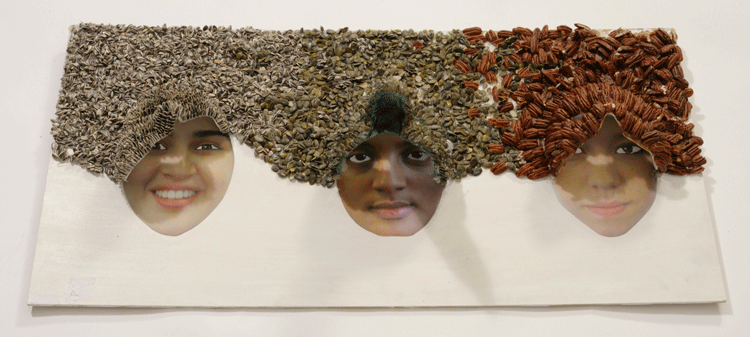
"The dispersion of identity in the minds of the demented"
by
Phoebe Collins (age 16)
Impington Village College
Sculpture in the category: Neurodegeneration - the silent killer
Larger image (0.64MB), different view (0.8MB)
Notes on work:
“My piece looks at the destruction of the minds of people who suffer from dementia. Each seed represents a brain cell, which is slowly being dragged away from the mind. The mask is both the disguising of the illness which many sufferers feel necessary to put on, to fit in with society. I also see it as the personality and identity, which can be lifted away once the illness has infected the brain. I also tried to use photos of women of different backgrounds, to show how dementia can affect all people of different walks of life.”
Comments for the organizers:
“This is a beautiful and painstaking piece of work.”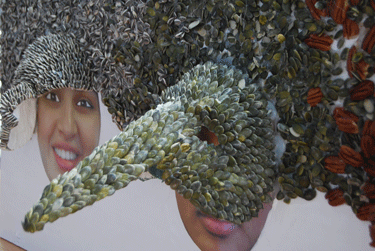
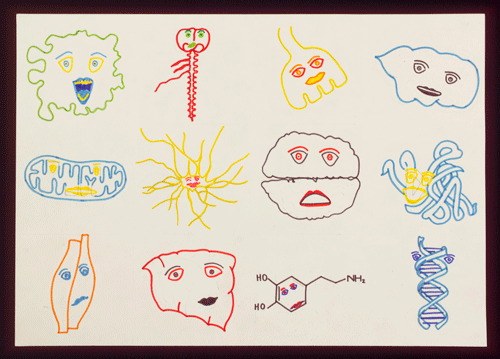
Picture from artbook (1.7MB)
Picture from artbook (1.1MB)
Neuro-emotions
by
Sophie Burkitt (age 17)
Netherhall School and Sixth Form Centre
Drawing in the category:
Neurodegeneration - the silent killer
Larger image (0.9MB)
Notes from artist:
“The faces reflect the emotions that the person with a neurodegenerative disease such as Alzheimer's will have. As each brain cell will be different each brain cell will have a different face/emotion”
Comment from judges:
“A great nucleus of ideas in the sketchbook and a very engaging and accessible final piece.”
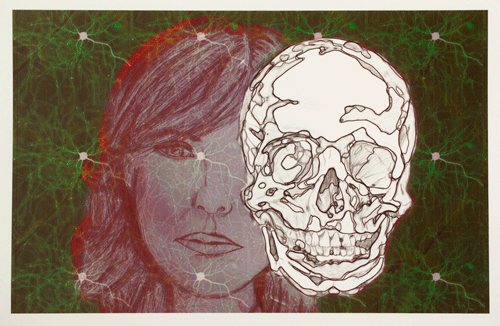
Remembrance
by
Mary Venise Visaya (age 17)
Netherhall School and Sixth Form Centre
Drawing in the category:
Neurodegeneration
Larger image (1.2MB)
Notes from artist:
“My work shows how a disease or an illness can bring death and to remind the public that death will come. However it also brings good and bad memories from the past.”
Comment from judges:
“A very nice finished piece.”
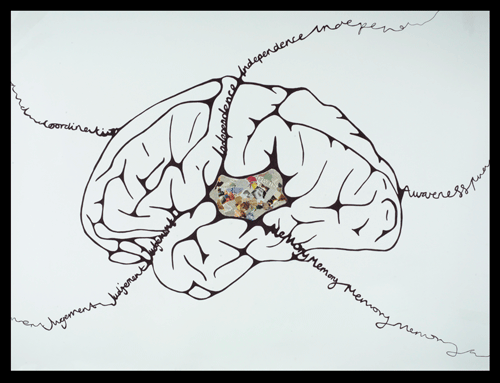
Notes on work:
“Neurodegeneration causes loss of simple body functions, functions that we take for granted. This is presented by words seeping out of the brain. The section in the middle lets you see the cluttered thoughts and feelings of the subject.”
Comments from judges:
“This was exquisite workmanship and a beautiful final piece. We could see this as almost a poster campaign for awareness of Alzheimer’s.”
Loss of Function
by
Alice Martin-Hawkins (age 15)
Parkside Federation
Entry in the category:
Neurodegeneration - the silent killer
Larger image (0.6MB)
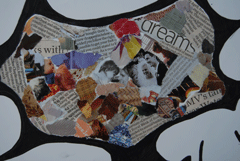
Enlargement from main picture
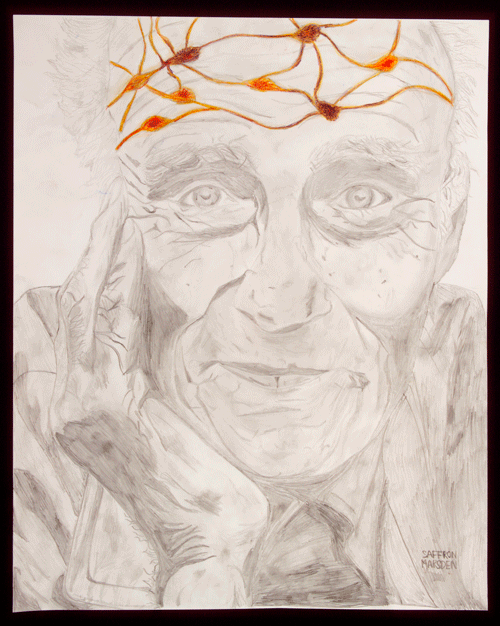
Overcome
by
Saffron Marsden (age 15)
Parkside Federation
Entry in the category:
Neurodegeneration - the silent killer
Larger image (1.1MB)
Painter comments:
An old man being overcome with neurodegeneration, shown through the neurons on his forehead, unhealthy and healthy, it’s the inescapable passage of time through his eyes, and how old age is inevitable.
Comments from judges:
“Beautifully executed, however, the figure didn’t convey the emotion of loss or show clearly the effect of neurodegeneration”
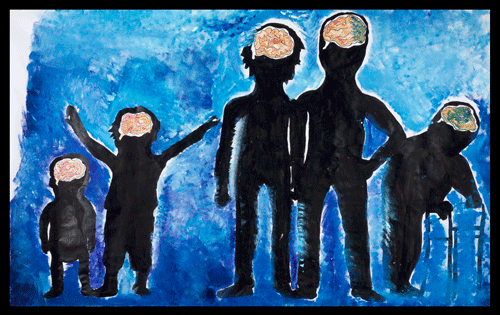
Evolution of Neurodegeneration
by
Scarlett Ferro (age 14)
Parkside Federation
Entry in the category:
Neurodegeneration - the silent killer
Larger image (1.3MB)
Comments from organizers:
“The idea of our brain directing our lives from the cradle to the grave is well conveyed here.”
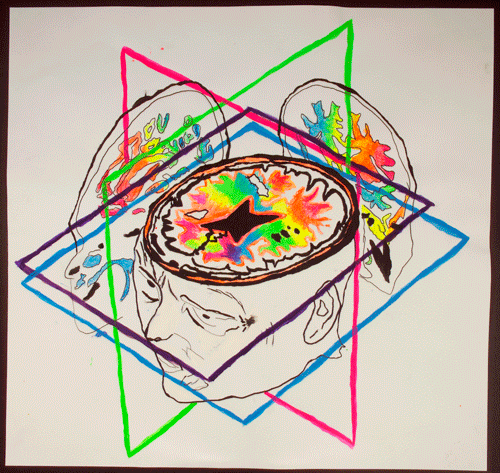
Brain scan
by
Cara Gannon
Parkside Federation
Entry in the category:
Neurodegeneration - the silent killer
Larger image (1.4MB)
Comments from judges:
We felt that this was a wonderfully executed piece with beautiful imagery. It was not clear what information it was conveying. Supporting work would have possibly been informative.
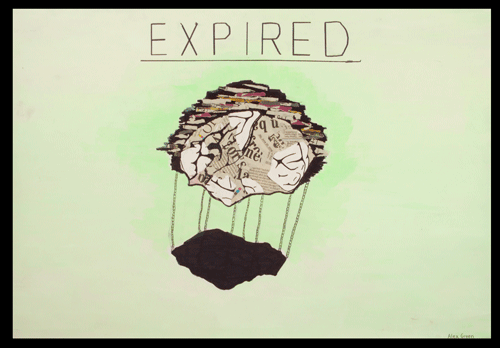
Expired
by
Alex Green
Parkside Federation
Painting in the category:
Neurodegeneration - the silent killer
Larger image (0.6MB)
Comments from judges:
“Wasn’t clear on the scientific breakdown or the links between the figure and the shadow. Humorous text”
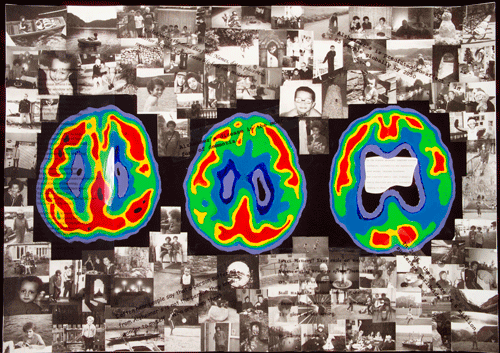
Alzheimer’s in the Brain
by
Kane Robbins (age 15)
Parkside Federation
Collage in the category:
Neurodegeneration - the silent killer
Larger image (1.7MB)
Notes by artist:
“My final piece shows the stages of the brain as Alzheimer’s progresses and how upsetting it can be to lose treasured memories. ”
Comment from judges:
“A great deal of hard work has gone into this piece, which conveys the emotion and loss of memories very well.”
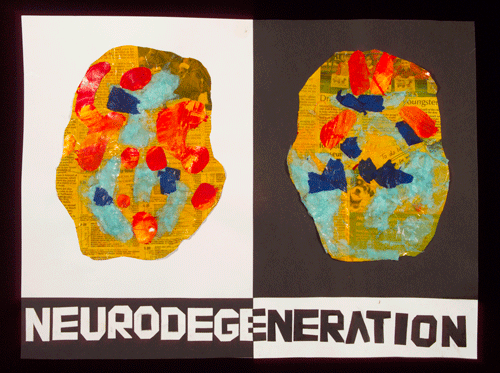
The silent killer
by
Shavana (age 15)
Parkside Federation
Collage in the category:
Neurodegeneration - the silent killer
Artist's comments:
I have copied two brains out and coloured and drawn their descriptions.
Comments from judges:
“Supporting work would have been very helpful in allowing us to interpret this artist’s work.”
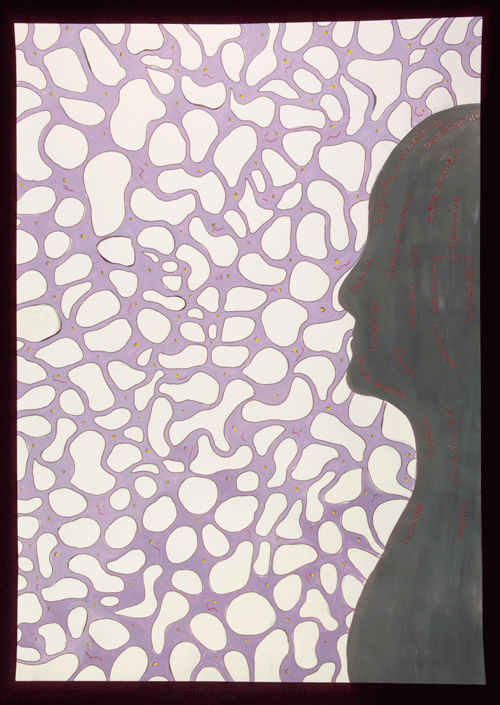
Tangled Cells
by
Catherine Watson (age 15)
Parkside Federation
Entry in the category:
Neurodegeneration
Larger image (6.6MB)
Artist's comments:
“The background shows the brain cells tangled with the neurodegenerative disease and the person’s thoughts are reflected on its face. ”
Comments from judges:
“This was a very thoughtful and complex piece. Many older people find self-expression through craftwork and this gave the piece a very human quality.”
Detail from picture in red thread
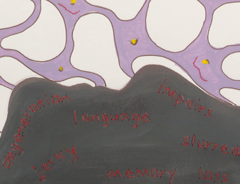
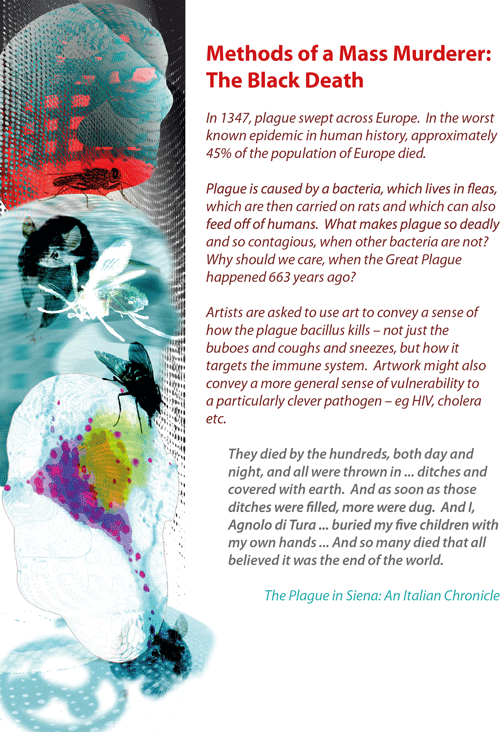
Exhibits below have been entered under the category
Methods of a Mass Murderer - the Black Death (Plague)
background
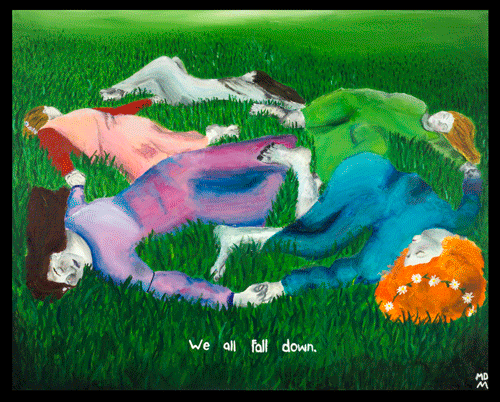
We all fall down
by
Megan Makinson (age 15)
Parkside Federation
Painting in the category:
Methods of a Mass Murderer - the Black Death (Plague)
Larger image (5.9MB)
Artist's comments:
My piece is a parody of Frederick Morgan’s ring a ring of roses painting (shown below). His is serene and they all look happy, while in mine they are dead. This is a truer portrayal as the nursery rhyme is describing the Black Death, from which thousands died.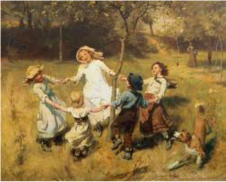
Comment from judges:
“A well executed and very visually striking canvas.”
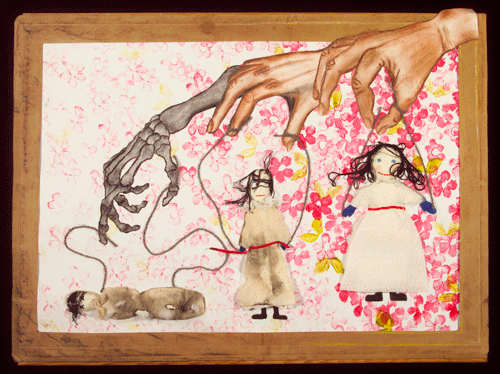
The Dance of Death
by
Hannah Strauss (age 15)
Parkside Federation
Textile entry in the category:
Methods of a Mass Murderer - the Black Death (Plague)
Larger image (1.5MB)
Artist's notes:
“The human organism as a puppet in the hands of the Yersinia bacteria. The death and deterioration shown by a dying puppet.”
Comments from judges:
“This was a beautiful and very well executed piece of work. The delicate use of textiles and representation of fever through singeing the fabric was especially imaginative. ”
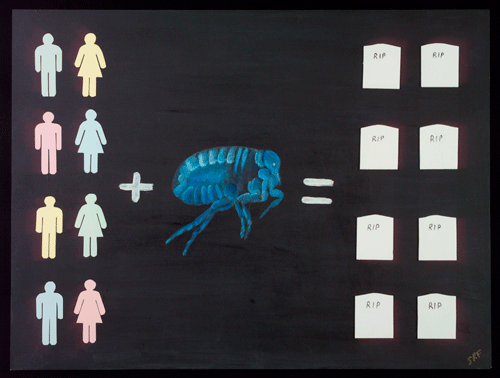
The Death Equation
by
Stephanie Fellows (age 17)
Hills Road Sixth Form College
Entry in the category:
Methods of a Mass Murderer - the Black Death (Plague)
Larger image (1.0MB)
Comments from judges:
“This was a nice tonal companion piece to exhibit no 2, but conveys very little information about what makes the plague so deadly.”
Double image (0.9MB)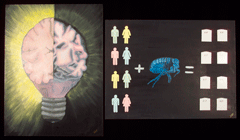

Massacre of Unintention
by
Ryan Carey (age 18)
Netherhall School and Sixth Form Centre
Painting in the category: Methods of a Mass Murderer - the Black Death (Plague)
Larger image 1 (0.38MB) or 2 (1.9MB)
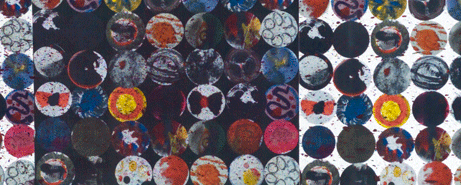
Comments from judges:
“This was a very interesting piece, especially accompanied and informed by the sketchbook. The artist has taken a very scientific approach to the development of the artwork – really insightful!.” (see pages from artbook below)
Pages from artbook 1(1.2MB), 2(1.4MB), 3(1.1MB), 4(1.4MB), 5(0.8MB), 6(1.4MB), 7(1.2MB), 8(2.4MB), 9(0.5MB)
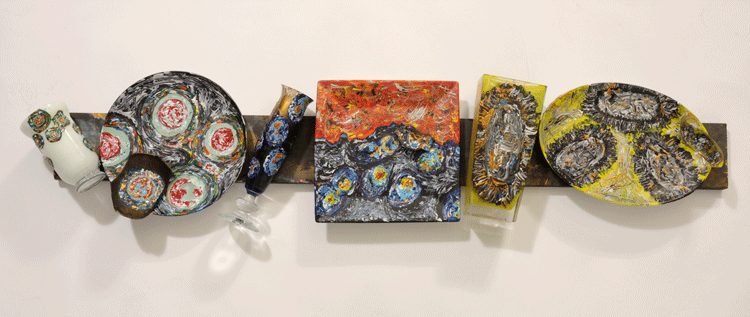
Deadly Ornament
by
Rhea Andrews (age 16)
Impington Village College
Sculpture in the category: Methods of a Mass Murderer - the Black Death (Plague)
Larger image (0.6MB)
Artist's notes:
“The reason for name - Deadly Ornaments - is because of the concept of humans touch and how we leave cells and disease on our everyday objects. It also comes from the deaths caused by disease and of how they are silent but deadly. My piece is made from acrylic paint applied on ceramic and glass objects. The pattern featured on the objects are from cells and bacteria of diseases, such as aids.”
Comments from judges:
“This was a visually very striking piece. It would have benefitted from further development to depict the structural beauty of the pathogens.”
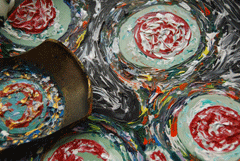
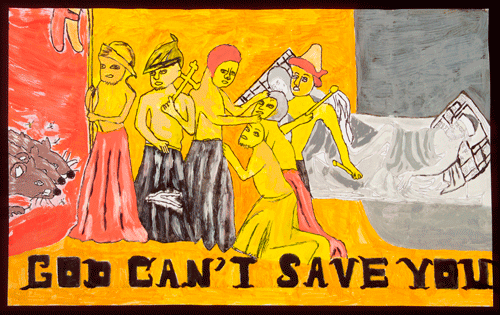
God Can’t Save You
by
Alex Wilson (age 15)
Parkside Federation
Entry in the category:
Methods of a Mass Murderer - the Black Death (Plague)
Larger image (1.4MB)
Artist's notes:
“My painting shows the fear of the people, knowing that they would eventually die of the black death and how they turned to religion.”
Comments from judges:
“An interesting copy of a medieval illustration giving prominence to the role of rats in carrying the fleas which spread the plague.”
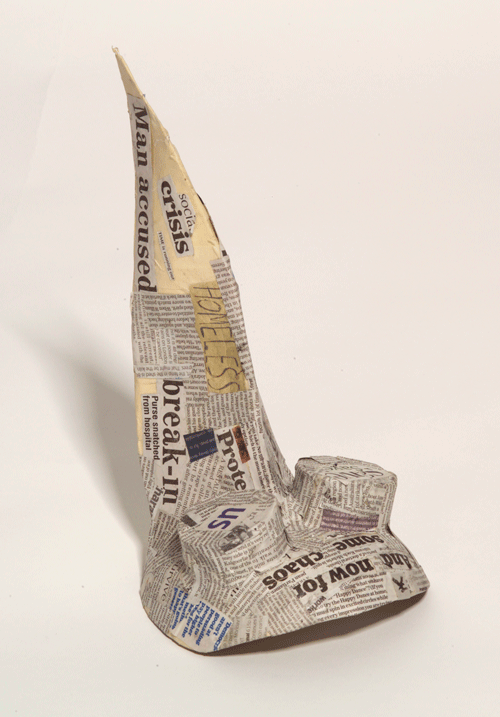
Plague Doctor’s Mask
by
Sian Shannon-Sinclair
Parkside Federation
Entry in the category:
Methods of a Mass Murderer - the Black Death (Plague)
Larger image (0.7MB)
Comments from judges:
“This plague doctor’s mask has some interesting text, but it is not a coherent message.”
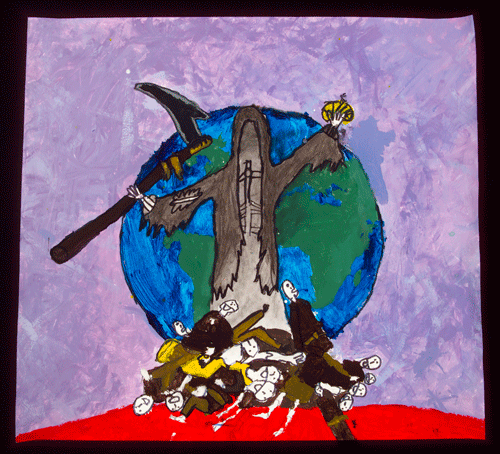
The Victory of Death
by
Alex.A.Prince-Mobbs (age 15)
Parkside Federation
Entry in the category:
Methods of a Mass Murderer - the Black Death (Plague)
Larger image (1.6MB)
Artist's comments:
“The grim reaper holding a human Brain and on top of the brain there is Plague flee, the grim reaper is standing on a pile of died people, and the pile is on a frozen lake of blood, behind the grim reaper is a projection of the earth.”
Comments from judges:
“This artist has clearly understood the apocalyptic nature of the Black Death.”
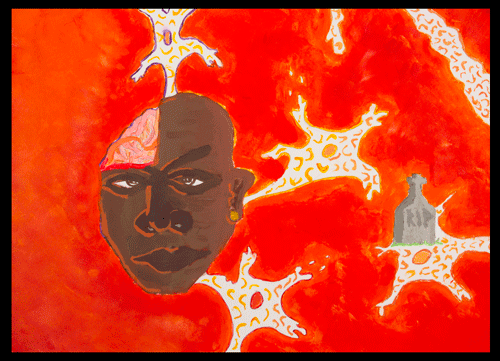
Black Suffering
by
Callum Fenn Macalister (age 15)
Parkside Federation
Entry in the category:
Methods of a Mass Murderer - the Black Death (Plague)
Larger image (1.5MB)
Artist's notes:
“A piece depicting the inflammation of the brain.”
Comments from judges:
“The focus is on black suffering, yet the suffering is universal. However, the anguish upon the face is evident and powerful.”
Cambridge News 29Sept 2011 (Online article)
Cambridge News 29 Sept 2011: Centre-spread (small version- 200KB) (large version- 7MB)
LMB News (link)
MRC Network Nov/Dec2011 (pdf)
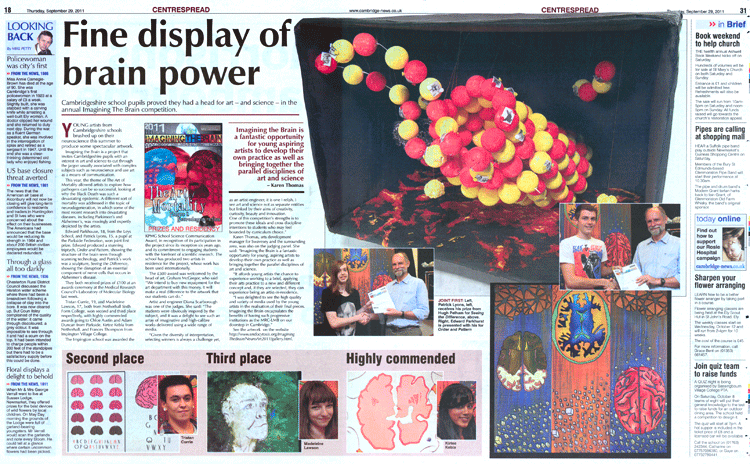

Schools Award for Science Communication
has been presented to the art department of Impington Village College
Neurodegeneration - the silent killer
Mass Murder - the Black Death (Plague)
Sponsored by MRC and MRC-LMB:
Poster and banner designs by Paul Margiotta, photographs of art works by Neil Grant,
topic designs by Graham Lingley and exhibition by Brian Tyrrell
Judges for ITB 2011
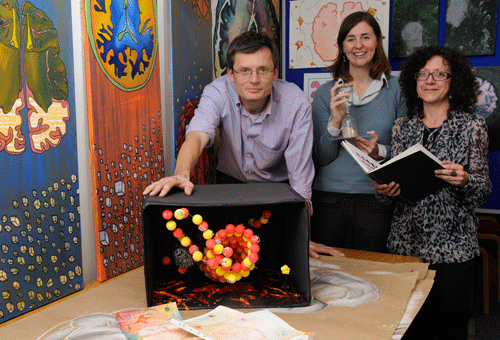
|
Karen Thomas, Arts Development Manager (Swavsey and surrounding area) Slideshow of exhibition: Slideshow |
| The organizers, Yvonne Vallis and Harvey McMahon would like to thank the exhibitors, teachers and the judges for their participation and once again making the event a success (see exhibit acknowledgements). | |
Poster (large 1.4MB) (Invitation to apply- closed now) |
|































